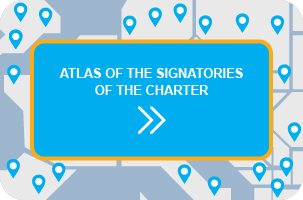Revised CEMR-EPSU guidelines to drawing up gender equality action plans in local and regional government
There are still clear structural differences between men and women in the labour market. In order to give men and women equal opportunities in terms of career and wage development, CEMR and EPSU think that active and sustained gender equality work is needed.
In 2017, the CEMR-EPSU working group revised the guidelines to drawing up gender equality action plans in local and regional government that had originally been established in 2007. The aim in updating these guidelines is to encourage the active use of gender equality plans by the social partners. The work involves commitment and actions that together can increase gender equality within at municipalities, county councils and regions.
According to the guidelines, gender equality can be pursued in two main ways:
Through positive action: specific policies to fight against inequalities between women and men and to promote equal opportunities.
Through gender mainstreaming: measures to incorporate gender equality in all areas of policy, at every stage of activity and at all levels.
The guidelines propose to divide the preparation of an equality plan into 5 stages:
- Establish a joint working group between employers and trade unions
- Identify the gender composition of the workforce
- Identify where inequalities exist
- Develop a set of actions to resolve the inequalities identified
- Monitor, report on, and evaluate progress
Issue that can be addressed in equality plans include:
- Recruitment and terms and conditions of employment: Are women recruited equally at all levels? Are there differences in employment contracts?
- Equal pay and job evaluation and effects of performance-related criteria for pay and promotion: Do pay structures discriminate against women? How many women compared with men achieve performance related pay criteria? How many women compared to men achieve promotion?
- Training: Who benefits from training? Do women benefit equally to men? If not, how can this be rectified? Are part-time workers included in training? Is training held at times that are convenient to women?
- Reconciliation of work and family responsibilities: What are the maternity, paternity and parental leave arrangements? How many men take up leave possibilities and if not many why? What about working time arrangements?
- Sexual and other forms of harassment: How is this addressed? This issue can be identified for example through a questionnaire / survey together with other questions
- Collection of sex-disaggregated data (quantitative and qualitative): Data is an essential part of equality action plans and enables baseline positions to be established, progress to be tracked and monitored, and trends and changes to be marked. It is important that data collection covers all working conditions, including pay and pension schemes
In addition to the general guidelines, the publication includes the following appendixes: Glossary; Equality checklist; Equality action plan template; Information on EU legislation on equality and anti-discrimination; Information on national legislation on equality plans.
These equality plans should be developed and implemented jointly by unions and employers and supported by all levels of management. Clear and firm political support is essential for the successful development and implementation of plans for gender equality.
Download the joint guidelines (EN):













